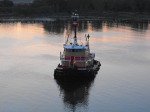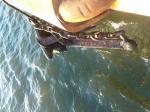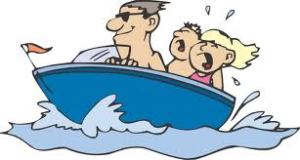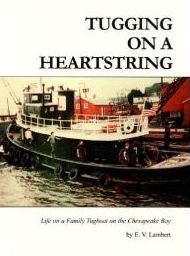
Thanks to a book recommended to me by Kennebec Captain and my time spent reading it, I have found the words to express my frustration with Zero Tolerance Safety Programs with a couple of quotes.
“The point of risk management is not to prevent failure, for that is impossible. The point is to have a plan ready to manage and control failure when it inevitably comes.”
“This may in fact be the real story of human and societal improvement. We talk a lot about risk management a nice hygienic phrase. But in the end, risk is necessary. Things can and will go wrong. Yet some have a better capacity to prepare for the possibility, to limit the damage, and to sometimes even retrieve success from failure.”
“When things go wrong, there seem to be three main pitfalls to avoid, three ways to fail to rescue. You could choose a wrong plan, an inadequate plan, or no plan at all. Say you’re cooking and you inadvertently set a grease pan on fire. Throwing gasoline on the fire would be a completely wrong plan.
Trying to blow the fire out would be inadequate.
And ignoring it “Fire? What fire?”would be no plan at all.”
These quotes are not my own, they are from a book (linked above) and a commencement speech. I believe they illustrate perfectly what and how we should think about risk management as a practice. The message we frequently get from management is the same old saw; “zero incidents, accidents, errors”. While this has a nice ring to it and is a worthy goal, it’s not humanly possible and we know it.
Planning for failures that might occur however, is well within the realm of possibility. Evidence of this kind of real world thinking is represented by our Vessel Spill Response Plans, salvage plans, voyage plans, operations manuals and training curricula. These documents all articulate what to do “when” something happens or “if this happens, then”. They are general in nature since it’s impossible to prepare for every possible permutation of events and write a specific procedure for each. It’s left to our training and judgement after that.
High Reliability Organizations
A High Reliability Organization is one that while highly trained to avoid failure, is keenly aware of the cues that arise announcing an impending one. The thing that makes them so reliable is that they are prepared and mindful enough to catch a bad series of events while they’re still “curable”. But it’s not just their awareness, their resilience in the face of an event it’s how quickly they can get the situation under control and continue using the plans set in place for such an incident as a guide.
It’s not making a blanket statement of “incidents won’t happen because we don’t want them to”, it’s the real world. The message is clear to me, coupled with proven safety procedures we need to recognize that, and prepare for WHEN things to go wrong.
The business of towing is full of risk, it’s why tug boats have fenders. It’s a contact sport. A sign on the bulkhead stating zero, zero and zero isn’t telling me how to accomplish it. And you can bet Harry Potter’s magic wand is out of the question.
The ability to meet and assume that risk is tied to practical and relevant training standards. The conflict between zero incident safety programs and reality is that if we were to eliminate all risk, nothing would get done. Something in that statement seems to make some eyes glaze over and disconnect from the conversation.
“Ships are safe in the harbor, but ships are meant to go to sea.”.
Someone has to take risks to make things happen. Sailing across the ocean, space exploration, flying out of La Guardia Airport during bird migratory season. None of these things happened because risk was eliminated, it was addressed and planned for. If you think all risk can be eliminated and still see progress you’re kidding yourself. By seeking that end you’ll find that you are paralyzed by every threat, real or imagined and taking a step ahead will never happen..
Read Full Post »































